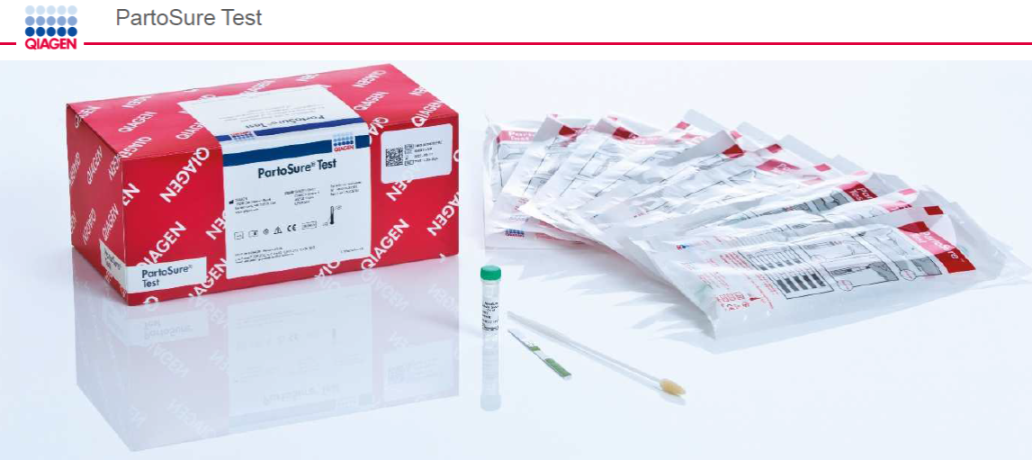PartoSure
- Details
- Category: Products

Features
PartoSure™
The PartoSure Test is a rapid, non-invasive strip test for the detection of placental alpha microglobulin-1 (PAMG-1) in patients with intact membranes and signs and symptoms of preterm labour.
Endorsed by an ever growing body of peer reviewed publications and the preferred test over all types of qfFN and phlGFBP-1
- PartoSure’s unique features include:
- High Positive (PPV) and Negative Predictive Value (NPV)
- No 24 hour waiting period after vaginal examination
- Speculum examination optional
- Results in 5 minutes or less
- No special equipment or training needed
- Wide gestational age range from 20 to 36 weeks and 6 days
Overview
The European Association of Perinatal Medicine published its updated Preterm Labor and Birth Management Guidelines in 2017, and the PartoSure test’s placental alpha-microglobulin-1 (PAMG-1) was identified as the biomarker test with the highest combination of negative predictive value (NPV) and positive predictive value (PPV) to be used in women with equivocal cervical length measurements between 15 and 30 mm.
Recent large scale meta-analyses comparing PartoSure with all other biomarkers confirms that the PAMG-1 test was found to have the highest PPV and LR+ (Positive Likelihood Ratio) across all risk stratification groups with statistical significance.
Published studies indicate a much lower rate of false positive tests than all other biomarker tests and that the PartoSure test is statistically superior with respect to SP and NPV for delivery within 7 days and SP for delivery within 14 days.
The PartoSure Test contributes to:
- Decreasing unnecessary admissions
- More judicious use of therapeutic interventions, such as corticosteroids and tocolytic agents
- Reducing the length of stay of high risk patients
- Minimizing unnecessary in-utero transfers to tertiary care centres
- Given the potential of a positive biomarker test to influence the decision to admit and/or treat, the PartoSure test leads to reductions in unnecessary hospitalizations and in-utero transfers to tertiary care centres and also allows for more judicious use of therapeutic interventions, such as antenatal corticosteroids and tocolytic agents.
- Decreased costs compared to other biomarkers
